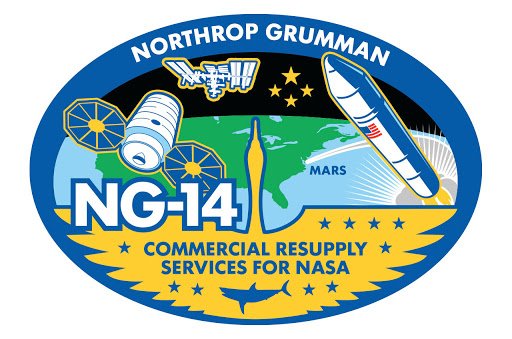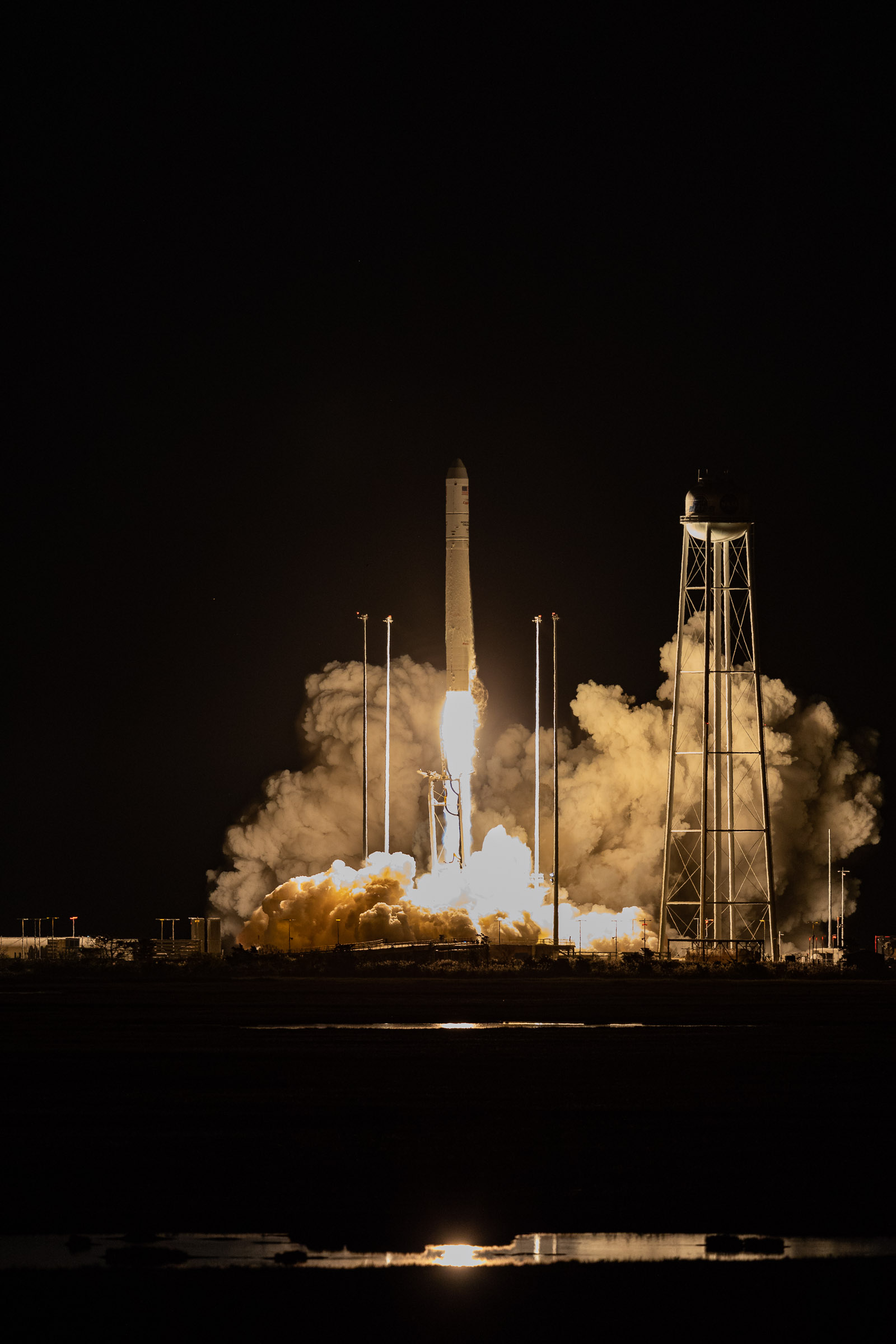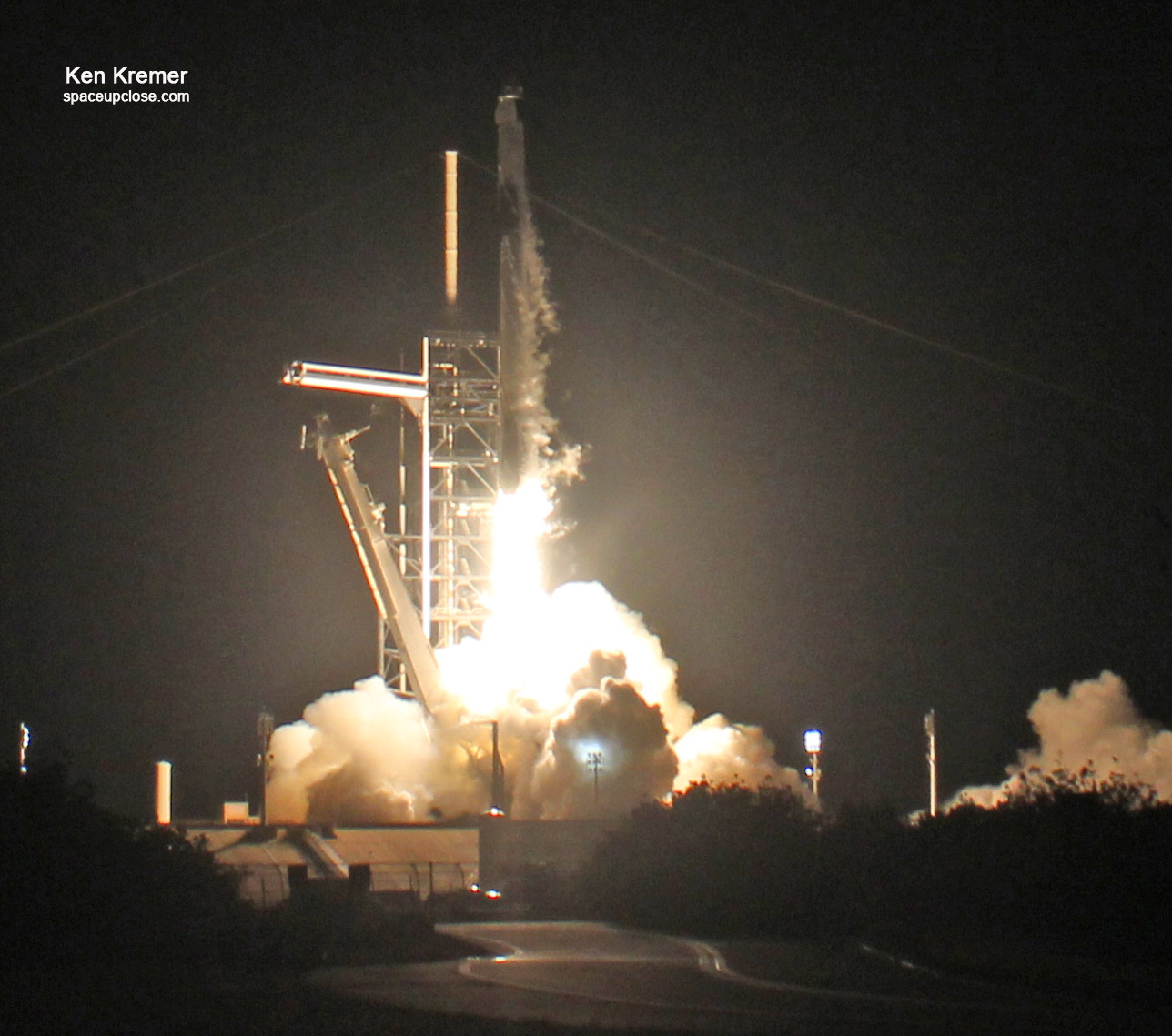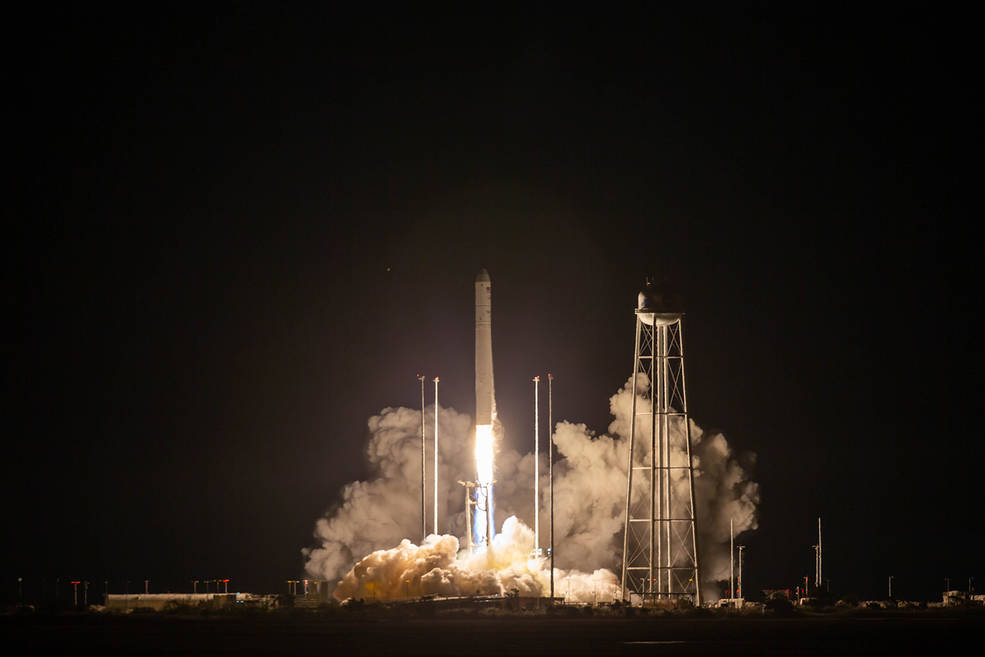
For SpaceUpClose.com & RocketSTEM
CAPE CANAVERAL SPACE FORCE STATION, FL – The US launch curse emanating from the Florida Space Coast was at last briefly broken – though not in Florida – by the successful launch of the Northrop Grumman Antares rocket Friday evening at 9:16 p.m. ET from NASA’s Wallops Flight Facility on Oct. 2 on Virginia’s eastern shore on a mission carrying a commercial Cygnus cargo resupply ship loaded with 4 tons of NASA science and supplies to the International Space Station (ISS).
Liftoff took place after a 1 day delay due to a last minute scrub related to ground systems.
Unfortunately the launch curse of near endless ‘scrubitis’ came back in full force when the SpaceX Falcon 9 set to carry the newest GPS III series navigation satellite for the U.S. military and the Space Force to orbit aborted liftoff 30 minutes later and just moments before planned ignition Friday evening Oct. 2 at 9:43 p.m. ET from pad 40 on Cape Canaveral Space Force Station.
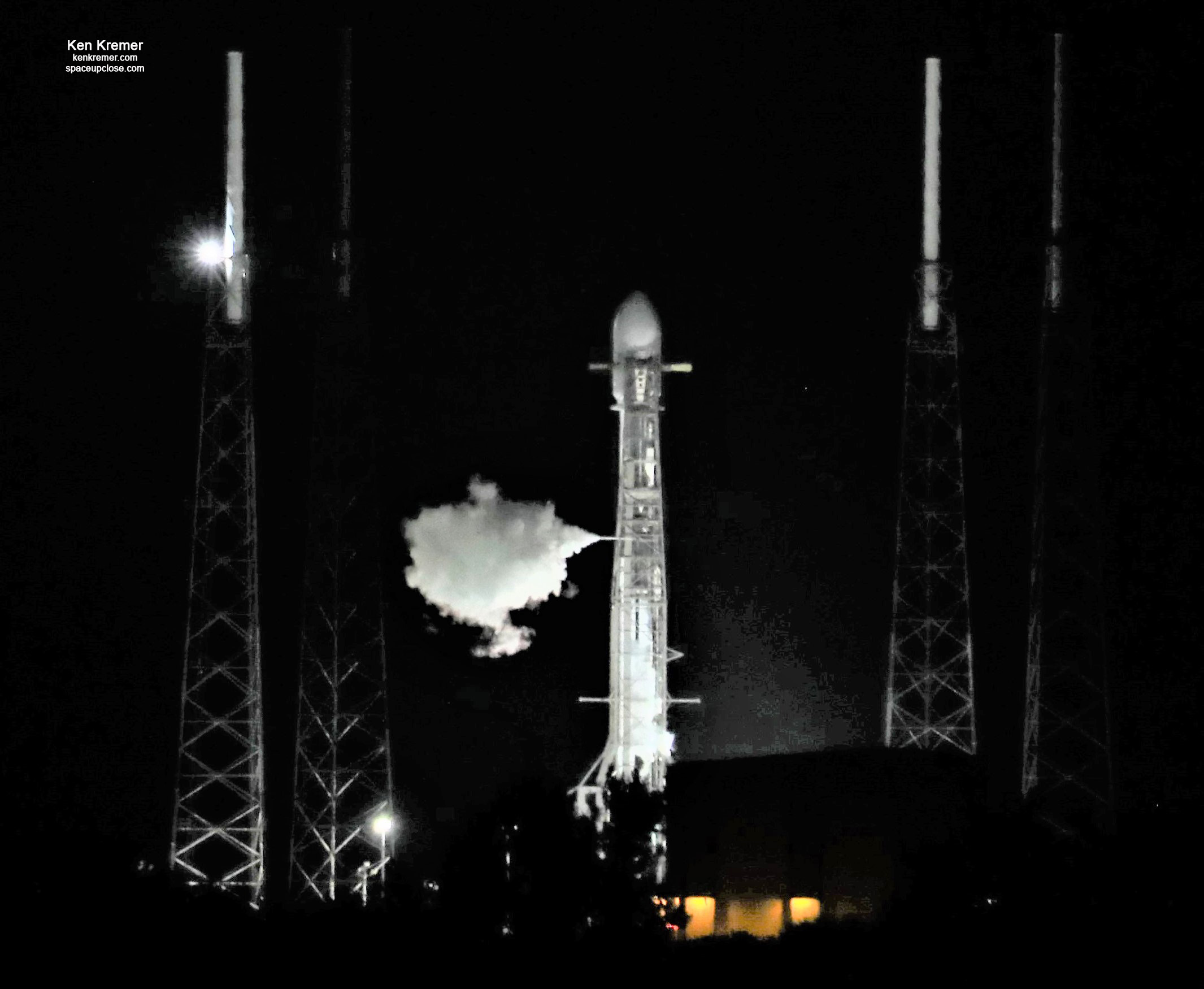
I could not attend the Antares launch because of the overlap with three launches here in Florida – which ultimately all scrubbed this week in the final moments of the terminal countdowns including another Falcon 9 and a ULA Delta IV Heavy.
The Northrop Grumman Cygnus NG-14 resupply spacecraft is on its way to the ISS jam packed with nearly 8,000 pounds of scientific investigations, technology demonstrations, commercial products, and other cargo after launching at 9:16 p.m. EDT Friday Oct. 2 from NASA’s Wallops Flight Facility on Wallops Island, Virginia.
Among the cargo is also a new advanced $23 million zero- G titanium space toilet.
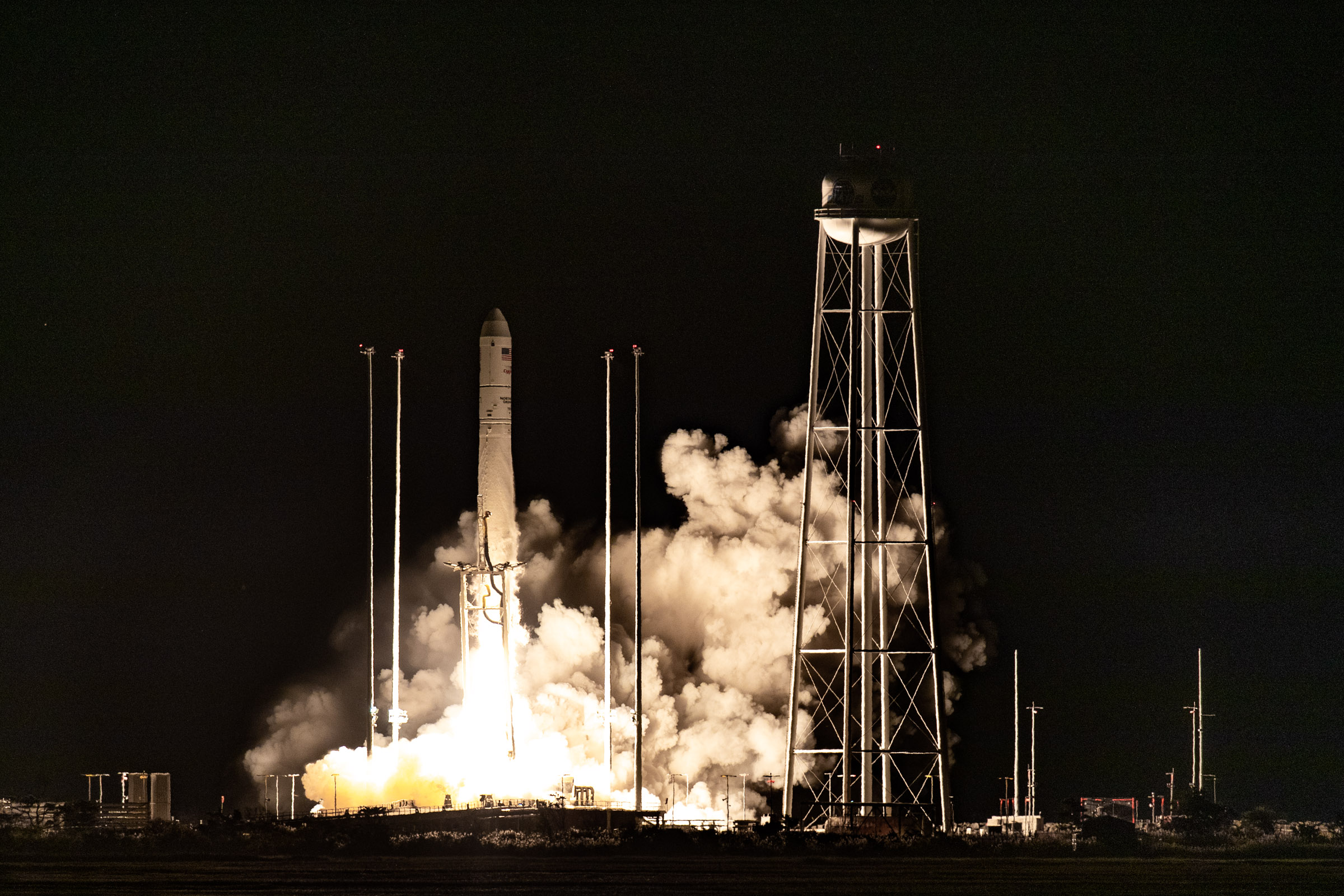
Cygnus cargo ship launched on an upgraded Antares 230+ rocket from the Virginia Mid-Atlantic Regional Spaceport’s Pad 0A at Wallops.
Liftoff! Gorgeous night view as our #Antares rocket carries the NG-14 S.S. Kalpana Chawla to the @Space_Station from @NASA_Wallops.
— Northrop Grumman (@northropgrumman) October 3, 2020
The cymbal shaped solar arrays deployed as planned
Launch success! We have confirmed that the solar arrays are fully deployed on the S.S. Kalpana Chawla #Cygnus. Next stop @Space_Station!
— Northrop Grumman (@northropgrumman) October 3, 2020
After a 2 day chase it is scheduled to arrive at the space station around 5:20 a.m. Monday, Oct. 5.
"It was a spectacular launch. I don't think you can ever get tired of watching these night launches," says Kenneth Todd, deputy @Space_Station program manager. Over 8,000 lbs of cargo & @ISS_Research on @NorthropGrumman's Cygnus spacecraft will be delivered to our orbiting lab. pic.twitter.com/NJnzChbLPl
— NASA (@NASA) October 3, 2020
NASA plans live coverage of the spacecraft’s approach and arrival that will begin at 3:45 a.m. on NASA Television and the agency’s website.
After tonight's perfect launch and ride to orbit, the @NorthropGrumman Cygnus cargo spacecraft will arrive at the @Space_Station early on Mon., Oct 5. Live NASA TV coverage of capture begins at 3:45am ET, followed by installation coverage at 7:30am. pic.twitter.com/suTk1zoWQ2
— NASA (@NASA) October 3, 2020
Expedition 63 Commander Chris Cassidy of NASA will use the space station’s robotic arm to capture Cygnus, while Ivan Vagner of Roscosmos monitors telemetry during rendezvous, capture, and installation on the Unity module’s Earth-facing port.
New @ISS_Research is headed to the @Space_Station after the successful launch of @NorthropGrumman's Cygnus spacecraft. Cargo aboard includes research on cancer treatments, a crop of radishes to cultivate, a VR camera, a new space toilet, and more: https://t.co/D3XyxvD284 pic.twitter.com/Flqh8sryR1
— NASA (@NASA) October 3, 2020
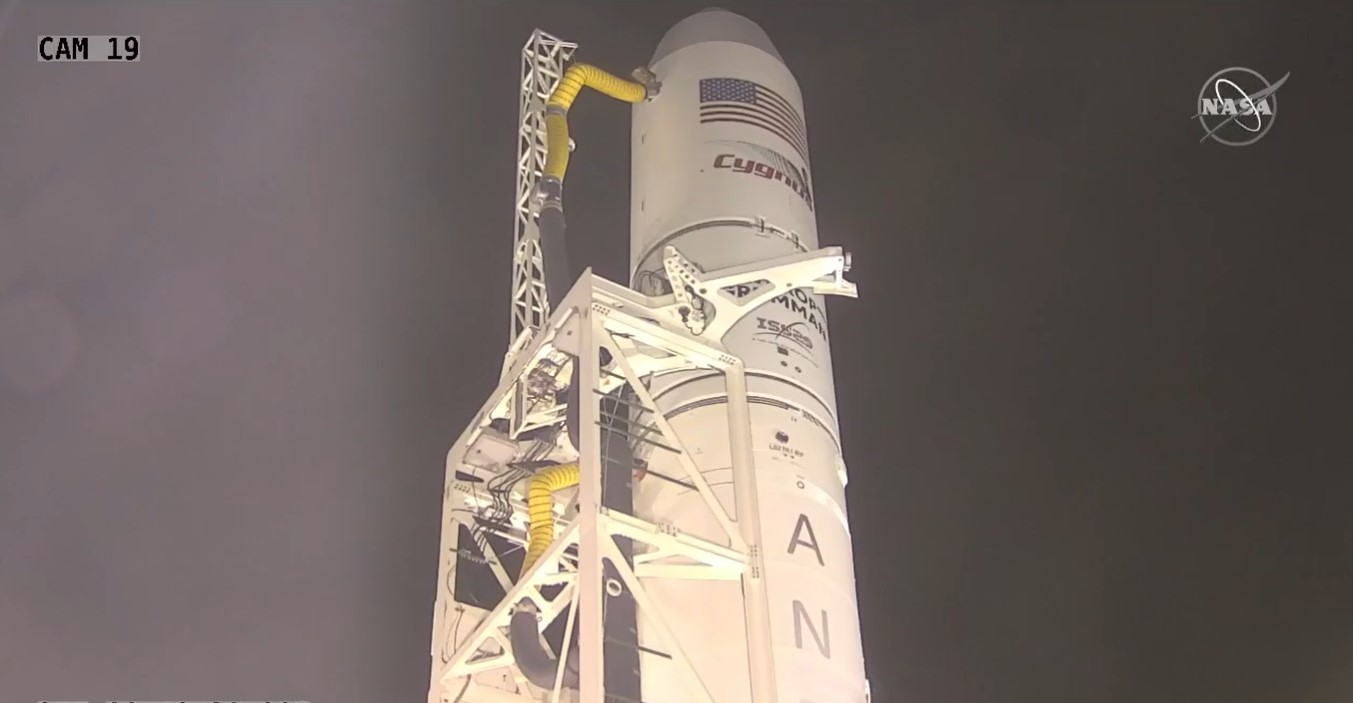
There are currently only 3 residents at the ISS- 1 from NASA and 2 from Roscosmos.
The next Soyuz crew launches on Oct. 14
This week:
👩🚀 Three space travelers prepare for an upcoming mission
🚀 Cargo & @ISS_Research launch to the @Space_Station
📊 A call to use open data to address real-world problemsFor these stories and more, watch: https://t.co/xbyw7Ngbfb pic.twitter.com/Gs1xmzYmBb
— NASA (@NASA) October 3, 2020
Here are the details from NASA:
Cygnus will remain at the space station until mid-December before it disposes of several thousand pounds of trash as it burns up during a safe re-entry into Earth’s atmosphere.
This delivery – Northrop Grumman’s 14th contracted cargo flight to the space station and the third under its Commercial Resupply Services 2 contract with NASA – will support dozens of new and existing investigations.
Included aboard Cygnus for delivery to the space station are:
Improving how we ‘go’ in space
A new toilet is headed to the space station. Its features improve on current space toilet operations and help NASA prepare for future missions, including those to the Moon and Mars. The Universal Waste Management System (UWMS) demonstrates a compact toilet and the Urine Transfer System that further automates waste management and storage. The smaller footprint of the UWMS supports a possible increase in the number of crew members aboard the space station, as well as planning for future exploration missions.
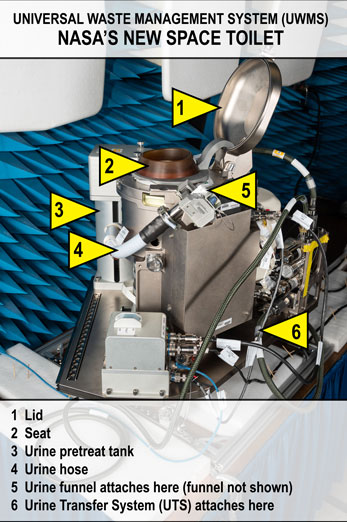
Energy and water from waste
The investigation Elucidating the Ammonia Electrochemical Oxidation Mechanism via Electrochemical Techniques at the ISS (Ammonia Electrooxidation) examines a process for ammonia oxidation in microgravity. An electrochemical ammonia removal system could serve as an innovative water recovery system on long-duration missions to the Moon and Mars and provide vital drinkable water in remote and arid areas on Earth.
Adding radishes to the space salad
A new crop of vegetables is headed to the space station. While previous experiments have grown different types of lettuces and greens aboard the orbiting laboratory, the Assessment of Nutritional Value and Growth Parameters of Space-grown Plants (Plant Habitat-02) investigation adds radishes to the mix, cultivating seeds to see how different light and soil conditions affect growth. Findings could help optimize growth of the plants in space, as well as provide an assessment of their nutrition and taste.
Identifying targeted cancer treatments
The Leveraging Microgravity to Screen Onco-selective Messenger RNAs for Cancer Immunotherapy (Onco-Selectors) investigation tests drugs based on messenger ribonucleic acids (mRNA) for treating leukemia. In normal gravity, the drugs to be tested are onco-selective, meaning they can distinguish cancer cells from healthy ones. Researchers expect any drugs that also demonstrate this trait in microgravity could make good candidates for safer, more effective, and affordable medicines to treat leukemia and other cancers. This could improve survival rates for thousands of people every year.
Spacewalks in virtual reality
The International Space Station Experience (ISS Experience) is creating an immersive virtual reality series documenting life and research aboard the space station. Partnering with the ISS National Lab and TIME, a team from Felix and Paul Studios launched a customized 360-degree camera to the space station in December 2018 that crew members have used to record a few hours inside the station every week. Felix and Paul and partner NanoRacks further modified an additional camera to withstand the extreme conditions of space and are launching for use in filming a spacewalk. The new camera will be mounted to the Canadarm2 to capture a spacewalk from start to finish as well as footage of Earth and the exterior of the space station.
These are just a few of the hundreds of investigations currently being conducted aboard the orbiting laboratory in the areas of biology and biotechnology, physical sciences, and Earth and space science. Advances in these areas will help to keep astronauts healthy during long-duration space travel and demonstrate technologies for future human and robotic exploration beyond low-Earth orbit to the Moon and Mars through NASA’s Artemis program.
In addition to science and research, this launch will also support commercial space endeavors. Estée Lauder’s New Advanced Night Repair serum will be photographed in the space station’s iconic cupola window as part of NASA’s efforts to enable commercial activities at the space station and develop a robust low-Earth orbit economy. The imagery will be used on the brand’s social media platforms. These opportunities can help catalyze and expand space exploration markets for many businesses.
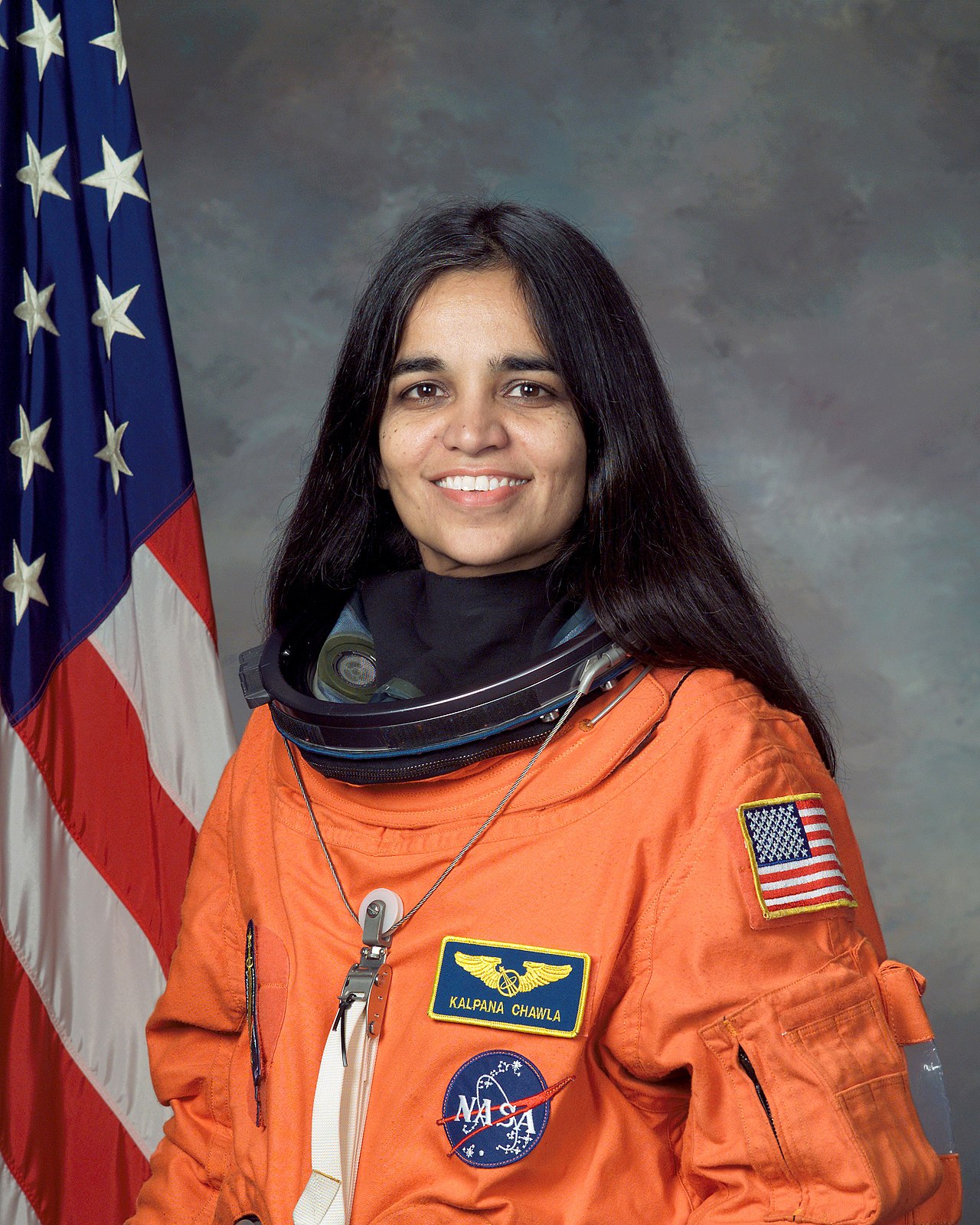
The Cygnus spacecraft for this resupply mission is named in honor of Kalpana Chawla, who made history at NASA as the first female astronaut of Indian descent. Chawla, who dedicated her life to understanding flight dynamics, lost her life during the STS-107 mission when the space shuttle Columbia disintegrated upon reentering Earth’s atmosphere.
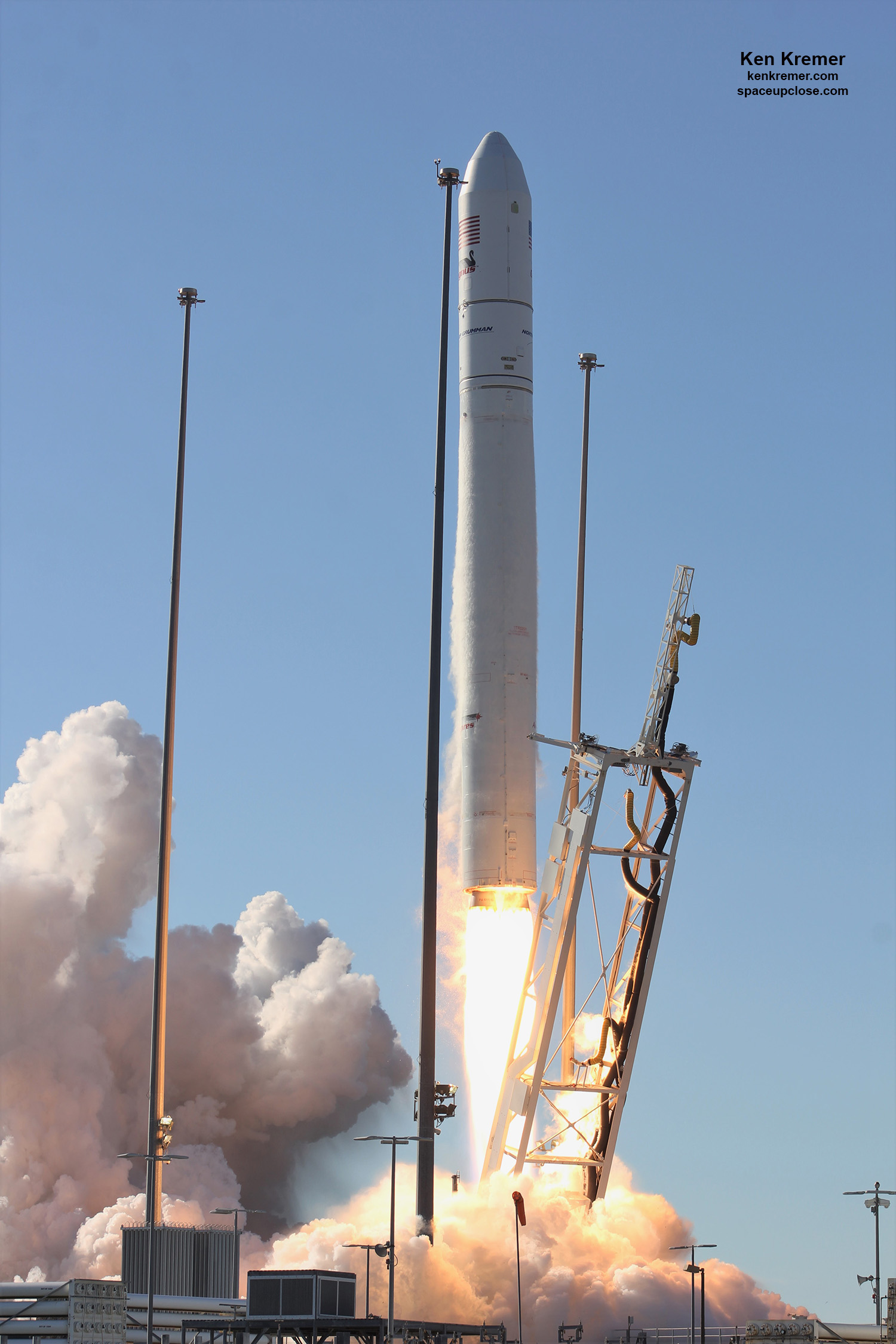
……………
Estee Lauder is also on board.
🚀 #AdvancedNightRepair got to tag along on NASA’s latest flight to @Space_Station! While they explore the secrets of space, we’ll never stop exploring the same for skin. Special thank you to @northropgrumman for the lift to space! Read more: https://t.co/VHjh5VDd7d pic.twitter.com/rEzjR9FUSp
— Estée Lauder (@EsteeLauder) October 3, 2020
Watch my SpaceX GPS post scrub commentary at Fox 35 News Orlando on Oct. 3
Watch my live interview discussion of current space missions and launches on Sept. 18 edition of ‘Stay Curious’ daily space show presented by the American Space Museum, Titusville, FL.
https://www.facebook.com/175507880819/videos/1058636561206413
Watch Ken’s continuing reports about Starlink, Commercial Crew and Artemis and onsite for live reporting of upcoming and recent SpaceX and ULA launches including Demo-2, Starlink, X-37B, Solar Orbiter, Mars 2020 and more at the Kennedy Space Center and Cape Canaveral Space Force Station.
Stay tuned here for Ken’s continuing Earth and Planetary science and human spaceflight news: www.kenkremer.com –www.spaceupclose.com – twitter @ken_kremer – email: ken at kenkremer.com
Dr. Kremer is a research scientist and journalist based in the KSC area, active in outreach and interviewed regularly on TV and radio about space topics.
………….
Ken’s photos are for sale and he is available for lectures and outreach events
Please consider supporting Ken’s work by donating at Patreon:
https://www.patreon.com/kenkremer
